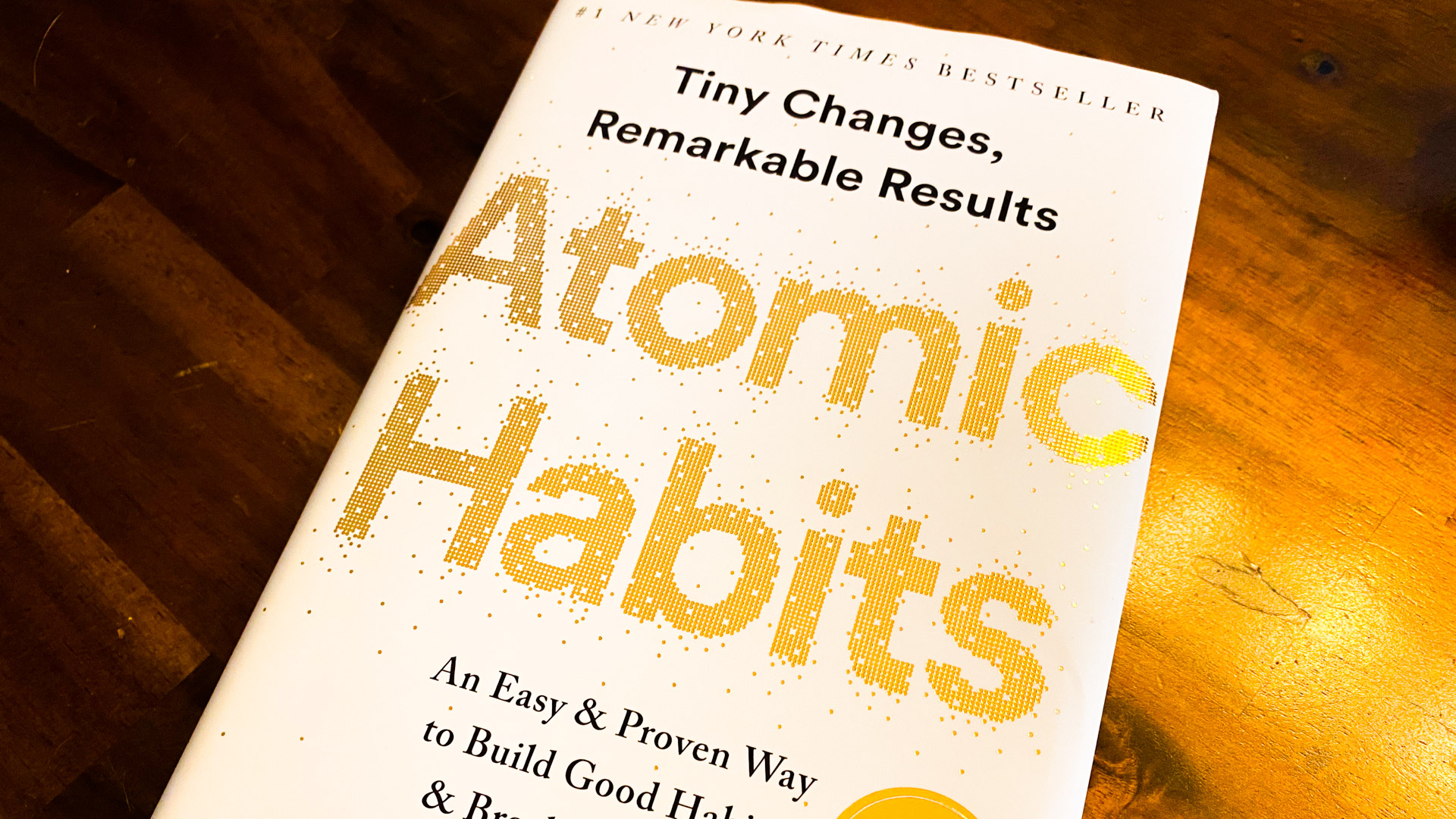There are many things I want to do in life, all the time, all at once. The more that I want to do, the less satisfied I am with progress. From reading The Power of Habit, I know that habits help reduce the mental overhead of daily life – they allow us to work on autopilot for the repetitive, boring tasks so that we can use our energy for more complicated tasks. Albeit from a different author, Atomic Habits builds on this knowledge and provides a framework for applying the lessons in The Power of Habit to everyday life.
When someone suggested to me that the book Atomic Habits by James Clear was the best book they’ve read this year, I got curious. The tagline of the book is “Tiny Changes, Remarkable Results.” I have reflected on how my own habits have improved or detracted from my satisfaction in life, and of course the tagline hooked me. I want to see remarkable results. Doesn’t everyone?
The book itself is an easy read, straightforward. It starts with the hook: the author, as a teenager, was accidentally hit in the face with a bat. He was gravely injured and it took a long time to recover, but through grit and intentional habit-forming, he got back into baseball despite physical limitations, eventually overcoming them to be named to the illustrious ESPN Academic All-America Team.
Then he began as many modern self-help authors begin, by blogging. I consider this a self-help book, despite any baggage from the term. Although he notes throughout the book that he was surprised by the positive response from his blog posts, and no doubt that is true, I also think it’s entirely clear that he saw a gap in the marketplace of ideas and fully intended to create a profitable enterprise out of filling it. The author never fully states “I set out to make a site about habits so I could make a business from it.” Not that it needs to be said. It just would be nice to have the transparency.
Past the personal anecdotes, James Clear starts diving in step-by-step on actionable ways to form new habits and kick old ones. I did find it incredibly enlightening and am looking forward to applying some of these lessons to my own life.
It is helpful to start with some foundational knowledge from reading The Power of Habit before jumping into this book, albeit not necessary. The behavior characteristics that are reinforced as describing “a habit” throughout that book involve a cue, a response, and a reward. While The Power of Habit discusses cravings and lumps it in with the response step, Atomic Habits decides to describe habits with craving as a distinctive step. So, cue, craving, response, reward. I believe this distinction adds clarity to the process of habits and clues us into the idea that craving is a powerful force that must be addressed to overcome any habit.
One lesson learned throughout is that identity goes hand-in-hand with habits. One anecdote involves how two people answer the question “Do you want a cigarette?” One person might say “No thanks, I’m trying to quit” while another says “No thanks, I’m not a smoker.” The difference is identity; the behavior is the same but which of the two do you think would be more likely to pick up a cigarette? I found this thought particularly engaging, because I think about my identity a lot. I see myself as creative, someone who likes to make things, and who wants to be involved in making the world a better place. I want to be sensitive and caring, and at the same time, resolved. I’m now thinking critically if my habits support the identity I have for myself or not, and whether I can adjust my identity to help form better habits.
As the book progresses, James Clear starts filling out a set of Laws that one can follow to form new habits or kick old ones. Each map to different parts of the habit loop, either the cue, the craving, the response, or the reward.
Because I like ruining surprises, I’ll give you the high level overview. To make a habit stick, you have to:
- Make the cue obvious
- Make the behavior attractive
- Make the behavior easy
- Make the reward satisfying
Of course, how you do these things is much more important to know when actually forming new habits. This is the main difference between The Power of Habit and Atomic Habits. The former tells you what a habit is and the latter focuses on how to form or break habits.
There are practical tips such as writing down your intentions (I will do x behavior at y time at z location), stacking habits (after y habit I will start z habit), and redesigning your environment (I will move all chocolate into a drawer). What I truly appreciate is that these ideas rely heavily on research to inform them. Self-help books are notorious for telling people how to live their lives based on personal experience, which is faulty, and I applaud this author’s diligence in explaining the science behind the advice. In the back of the book, there are pages of references to the studies and articles used to inform the book.
These practical tips are what make Atomic Habits worthy of picking up, and why I wholeheartedly recommend the book. Habits form the foundation of life, they are the little things that we string together to make a day. At least 40% of our behaviors are habit-driven; some estimate as high as 95%. Whatever the number, if we can think consciously about the nonconscious parts of our lives and choose to direct them, it can make a big difference in how we live our lives. I have been thinking more critically about my own habits while reading the book, and I hope to continue doing so long past putting it down.



